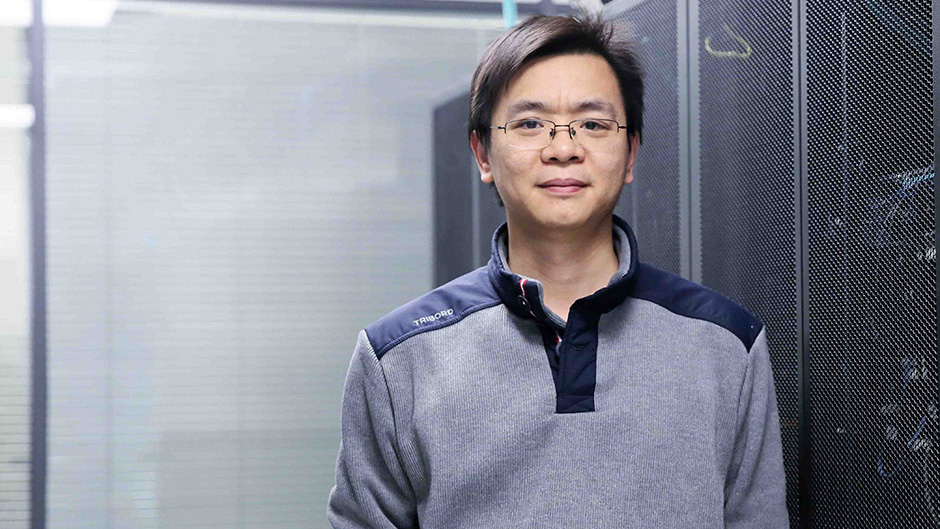16 Apr 2019
With the creation of the world’s biggest carbon market in 2017, China signaled its ambitions for a carbon-free future. But what needs to happen for the country to go carbon-free?
This is what is driving a number of researchers at Xi’an Jiaotong-Liverpool University, who are working in fields as diverse as chemistry, engineering and business to find viable solutions to reduce carbon emissions globally.

Dr Lifeng Ding (pictured above), who is based in XJTLU’s Department of Chemistry, says science is an important piece of the puzzle but economics and politics also play a key role in creating a carbon-free future.
“Can we be carbon free by 2050? This will be a challenging goal to realise as there is currently resistance in both politics and economics,” Dr Ding says.
“As scientists, we need to act like catalysts in a chemical reaction to accelerate a carbon-free future by providing economically viable technologies. We are devoted to making such technologies happen here at XJTLU.
“One approach is to find alternative clean fuels to replace fossil fuels. Hydrogen has been recognised as a promising energy carrier because it has zero carbon emissions and good energy density – it’s also an abundant element on earth.
“But there two main issues preventing a hydrogen-powered economy – hydrogen production and hydrogen storage. We are still searching for practical ways to produce and store the element.”
Dr Ding says conventional hydrogen storage relies on high pressure conditions which are not widely used due to additional costs and energy associated with manufacturing the reinforced storage cylinders, as well as safety concerns.
“We are investigating the use of novel porous materials which can store adequate hydrogen gas under conditions close to room temperature and atmospheric pressure,” he says.
“This creates a safer storage option for hydrogen that is also better for the environment.”
.jpg)
Dr Ding’s colleagues Dr Graham Dawson and Dr Ruiyao Wang are working in a related area, creating water-splitting technologies capable of converting water into hydrogen using either solar or electrical power.
“We are studying novel systems for hydrogen production through semiconductor water splitting,” Dr Dawson says.
“We are approaching this from two ways – in terms of creating more efficient systems, and understanding the system itself from a fundamental perspective.”
Researchers from the Department of Electrical and Electronic Engineering at XJTLU are also working closely with their colleagues in chemistry to explore alternative energy solutions.
A multidisciplinary team including Dr Dawson and Dr Anthony Centeno from the Department of Electrical and Electronic Engineering recently published a paper in the journal Scientific Reports, looking at how to extract solar energy more efficiently.
“Our focus is on understanding and utilising the plasmonic effects that occur when light is incident on noble metals such as gold and silver,” Dr Centeno says.
While scientific solutions are vital, they need to be economically viable to succeed outside of the lab.
International Business School Suzhou economist Dr Soo Keong Yong says there must be an economic incentive to change the private sector’s behaviour and this is where governments walk a fine line between environmental policy and economic viability.
“A lot of traditional environmental policies are command and control type policies, where companies must reduce emissions for example, or they’ll be punished,” he says.
“Most of the time, these policies lead to short-term solutions. Usually, companies resort to quick fix measures to reduce their pollution or emissions but there are no permanent changes in companies’ behavior.”
Dr Yong says one example of an environmental policy that provides economic incentives to reduce carbon emissions is the recently introduced pilot carbon market – specifically the carbon emissions trading scheme – in China.
“Carbon markets work by governments issuing each company with permits dictating the amount of carbon they’re allowed to emit. Companies can then trade their quota on the market,” he says.
“China is not the first place to implement a carbon market but its market is expected to be the world’s largest when it is fully operational on a national scale in the future.
“The government is currently still working on the detailed rules and regulations before implementing the scheme.
“Research so far suggests that if this kind of policy is well designed, it is not only useful to reduce carbon emissions short-term but it also creates incentives for long-term carbon emission reduction.
“And how is the long-term reduction achieved? That’s where clean technology comes in.
“The economy and related environmental policies must create an atmosphere where it makes business-sense to invest in clean technology – like the type of technology our Chemistry and Engineering departments are working to develop.
“Only with the right policies, the right government support and the right technology – that is both cheap and effective – will we achieve a carbon-free future.”
By Rosanna Galvin
16 Apr 2019
RELATED NEWS

New algorithm helps trains run on time while reducing carbon emissions
This week marks the start of the largest seasonal migration in the world as many of China’s 1.3 billion people travel across the country to reunite with thei...
Learn more







